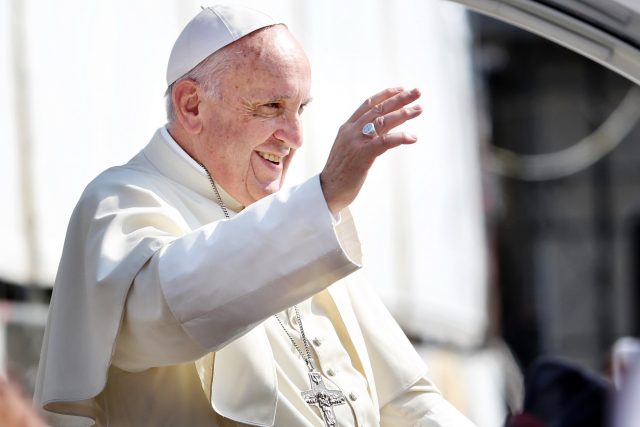
“The last time I went was in ’75, I was supposed to go again in ’76 but there was the coup in Argentina. I love the sea, I really do,” said Pope Francis in one of his final interviews.
Now His Holiness, after having a chat with Saint Peter, will be able to return to where the deep blue meets the endless azure. To that place where spiritual depth and naked bodies intermingle. He will do so without a cassock, simply as Jorge Mario Bergoglio. Stripped of the white robe that, throughout his decade as Christ’s vicar, he tried to rid of all things superfluous. Gone were the traditional red shoes and the gold Fisherman’s Ring. He preferred a silver version instead. The same choice applied to the pectoral cross—he continued wearing the one he had as cardinal.
That the Argentine would be different from his predecessors became clear on the evening of March 13, 2013. St. Peter’s Square was packed. The fifth ballot in the Sistine Chapel resulted in the white smoke. Cardinal Jean-Louis Tauran made the announcement: “Annuntio vobis gaudium magnum: Habemus Papam […] Franciscum,” he declared at 7:06 p.m., introducing the world to its new pontiff.
Revolutionary in form and substance from the very first minutes. In form, because he appeared on the Loggia of Blessings dressed only in white, without the red mozzetta fastened over the chest with buttons, worn by all his predecessors. In substance, for the name he chose: Francis, after Francis of Assisi, patron saint of Italy, who chose a life of poverty despite being born into one of the richest families of his city. “A man of poverty, a man of peace. A man who loves and protects Creation,” he told 5,000 journalists during his first press conference. He chose the name because, as he explained on the same occasion, his vision of the Church was “a poor Church for the poor.”
He was the first Jesuit to become Pope, from the order founded in the early 1500s by Ignatius of Loyola. In 1773, Clement XIV suppressed the order for political reasons. Jesuits—people before priests—have never sought convenient positions and, for that reason, have often been unpalatable to many, like Bergoglio, fully embodying the style of the Society of Jesus. Among the spiritual exercises created by St. Ignatius during his convalescence from a leg wound sustained during the siege of Pamplona in 1521—he was a soldier before converting—the one that resonates most with the Argentine is called ‘The Two Standards.’ One must close their eyes and imagine a battlefield with two armies facing each other. Two great banners waving in the sky and a choice to be made: which side to join.
That’s what he did his entire life: he chose the concreteness of the streets over drawing-room theology, never shying away from the uncomfortable issues his papacy had to face. From the recent war in the Middle East, where he wanted to go to Gaza, to his repeated calls for disarmament, to the offer to mediate in the war in Ukraine, not forgetting his harsh criticisms of the arms industry. From his appeal to “peacefully fight for justice and religious freedom” in defense of persecuted Christians, to his dialogue with the Islamic world and the historic Mass at Zayed Sports City Stadium in Abu Dhabi. His positions on immigration and integration earned him the label of “a leftist,” when they were simply those of a Catholic pope. His stance was firm on pedophilia and ethical issues such as abortion and euthanasia, yet open toward homosexuals: “The Church welcomes everyone, and does not ask how you are.” He also addressed environmental concerns in his encyclical Laudato si’.
The reality is that Pope Francis represented something different. From the first words he spoke to the last ones he wrote in his will: “The tomb must be in the ground; simple, without particular decoration, with only the inscription: Franciscus.”



 Subscribe
Subscribe